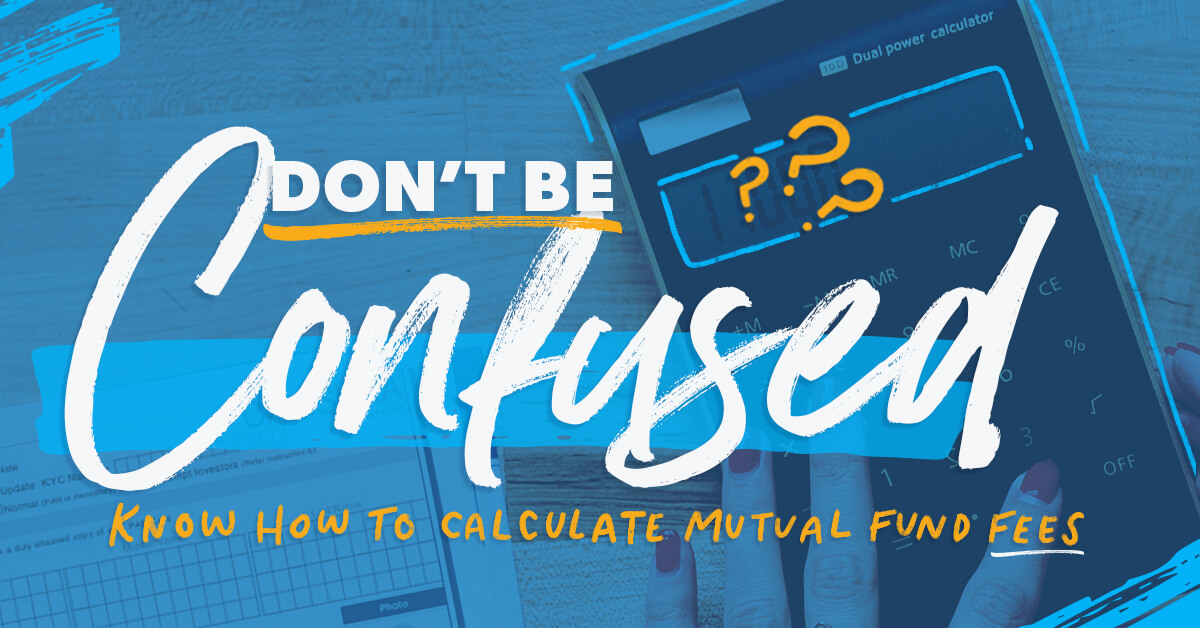
Investing in mutual funds for retirement can be confusing, especially when it comes to fees that aren’t always clear. Front-end load, level load—these are not types of washing machines. They are mutual fund fees, and nobody likes being surprised by them. It’s kind of like that feeling you get in the pit of your stomach when your car has been in the shop and the guy with his name embroidered on his greasy shirt tells you how much you owe.
Now stretch that feeling out over 30 years of retirement investing, and all those unknown costs could give you a lot of anxiety. But you can avoid that hassle—and a lot of expense—by investing for your retirement through mutual funds that charge up-front fees or commissions. Not only do you know what you’re paying from the get-go, but over the long term, these funds are also a better deal than the funds that don’t charge a commission at all.
Market chaos, inflation, your future—work with a pro to navigate this stuff.
How is that possible? Let’s take a look at how mutual funds charge fees and how that can affect the growth of your retirement nest egg.
Understanding Mutual Fund Fees
You know how airplane seating is usually divided into different sections like first class, business class and economy? Well, mutual funds work in a similar way! When you buy shares of a mutual fund, it’s sort of like buying seats on an airplane—you’ll be charged differently depending on the type of shares you buy from your mutual fund.
A single mutual fund might offer different “classes” of shares for investors, and there are three main types of fee-based mutual fund classes: Class A shares, Class B shares and Class C shares. The main difference between them is how the mutual fund will charge you.
Each class has a different type of “load,” which is just investing speak for a sales fee or commission. These loads cover the cost of a financial advisor or investment professional who helps you identify which funds might fit your portfolio.
Let’s dive into the different types of loads that come with the different classes of mutual funds!
1. Front-End Load (Class A Shares)
For Class A shares, you pay most of your fees up front. For example, if you plan to invest $10,000 in a Class A share, you might have to pay an up-front fee of about 5.75% of $575. That’s why it’s called a front-end load. As a result, your initial investment will be reduced to $9,425 on day one. That might sound like a lot to pay right off the bat. However, Class A shares usually have the lowest ongoing expenses and pay off in the long run.
2. Back-End Load (Class B Shares)
These shares don’t come with an up-front fee. So if you have $10,000 to invest, you can invest the full $10,000. But there’s a catch: Class B shares carry higher ongoing expenses. And on top of that, they have a back-end load—called a contingent deferred sales charge (CDSC)—if you sell your shares before an agreed-upon period of time, usually five years or so. This back-end fee is usually a declining percentage that gets lower every year—for instance, 5% the first year, 4% the second, and so on.
3. Level Load (Class C Shares)
Like B shares, these don’t have an up-front fee either. However, Class C shares do carry the highest ongoing expenses of the three classes. They also have what’s called a level load—an annual fee (usually 0.25%) on the net value of the fund.
4. No-Load Funds
And then there are mutual funds that don’t charge a commission at all . . . those are called no-load funds. These funds don’t charge a commission because you buy them straight from an investment company or brokerage firm—there’s no financial advisor or investment professional there to research funds for you or sell them to you. But no-load funds might have fees and ongoing expenses that will cost you later on.
Load Funds vs. No-Load Funds: Which One Is Better?
You might be looking at that list and thinking to yourself, No commission or sales charge? The no-load funds must be the cheaper option, right? Not so fast! “No commission” does not necessarily mean “no cost” or even “low cost.” Here’s what we mean.
What people usually forget with no-load funds is that they come with plenty of ongoing fees that add up, which could make them more expensive than loaded funds. For example, a no-load fund may charge up to 1% in marketing and service fees (called 12b-1 fees) each year on the total value of your investment. That doesn’t sound too bad, but that’s every year for as long as you own those shares. If you owned Class A or B shares instead, you might have much lower ongoing fees. So if you plan on holding on to your mutual funds for decades, it could be cheaper to avoid no-load funds. The best way to find out about these fees is to read the fund’s prospectus, which will list fees and expenses.
The thing is, you might not realize how much your no-load fund is costing you until you’ve been invested in it for a few years. And you’d only know it then if you were keeping an eye on your costs and comparing them to other funds. That’s just like having your car in the shop and not knowing how much the repair will cost until you pick it up. If you don’t know what you’re dealing with on the front end, you will always be worried about the bill.
Having a reliable mechanic with up-front pricing gives you a sense of peace, even if that mechanic might not be the cheapest option. It’s the same with mutual funds. Would it be cheaper to invest in a no-load fund versus a front-load fund? Today, yes. It would be cheaper. But in the long run, you can end up paying way more. You have to keep a long-term view with your mutual fund investments.
And don’t forget that the sales charge on your front-loaded funds isn’t money wasted. It goes to pay your investing advisor for the service they provide: helping you choose excellent mutual funds.
Now, with all that said, a combination of low-cost front-load and no-load funds can reduce your expenses so you can get the most out of your investments’ growth. But there’s more to choosing funds than price. You want a diversified mix of funds with a history of good performance. We recommend investing evenly across four different types of growth stock mutual funds: growth and income, growth, aggressive growth, and international.
To achieve that perfect mix and maintain it over time, make sure you’re working with an advisor you can trust—one you’ll want on your team over the decades as you work toward your retirement goal.
Work With a SmartVestor Pro
Most mutual funds will grow enough over time to pay for themselves, but are yours growing enough to give you a comfortable retirement? A SmartVestor Pro can help. They can review your mutual fund choices and help you nail down whether or not you’ve got the right investments to get you to your goal.
Our program connects folks with qualified investment professionals who are familiar with what we recommend and can guide you in creating a retirement plan.
Make an Investment Plan With a Pro
SmartVestor shows you up to five investing professionals in your area for free. No commitments, no hidden fees.
This article provides general guidelines about investing topics. Your situation may be unique. To discuss a plan for your situation, connect with a SmartVestor Pro. Ramsey Solutions is a paid, non-client promoter of participating Pros.



